The Philippines sits at the crossroads of Southeast Asia, where centuries of trade, colonization, and cultural exchange have created one of the world’s most fascinating food scenes. Spanish conquistadors brought their cooking techniques, Chinese traders introduced noodles and dumplings, American influence added new ingredients, and indigenous traditions provided the foundation for it all. The result is a cuisine that’s both familiar and exotic, combining sweet, sour, and savory flavors in ways that’ll make your taste buds do a happy dance.
Filipino food reflects the archipelago’s 7,641 islands, each with its own twist on classic recipes. Here are 18 dishes that showcase the incredible diversity and bold flavors of Philippine cuisine.
Adobo

Adobo isn’t just a dish—it’s practically the national identity of the Philippines served on a plate. This cooking method involves simmering meat (usually chicken or pork) in a mixture of vinegar, soy sauce, garlic, and bay leaves until everything becomes tender and deeply flavorful. The vinegar acts like a natural preservative, which made perfect sense in the tropical heat before refrigeration became common. Every Filipino family has their own secret adobo recipe, passed down through generations like a delicious heirloom.
Lumpia

Think of lumpia as the Filipino cousin of the spring roll, but with a personality all its own. These crispy cylinders get stuffed with a mixture of vegetables, meat, or seafood, then wrapped in a thin crepe-like wrapper and fried until golden brown. Fresh lumpia comes served without frying, wrapped in a soft crêpe and topped with a sweet peanut sauce that’ll make you forget about every other dipping sauce you’ve ever tried. Street vendors across the Philippines serve these hand-held treasures, making them the perfect snack for exploring busy markets.
Lechon
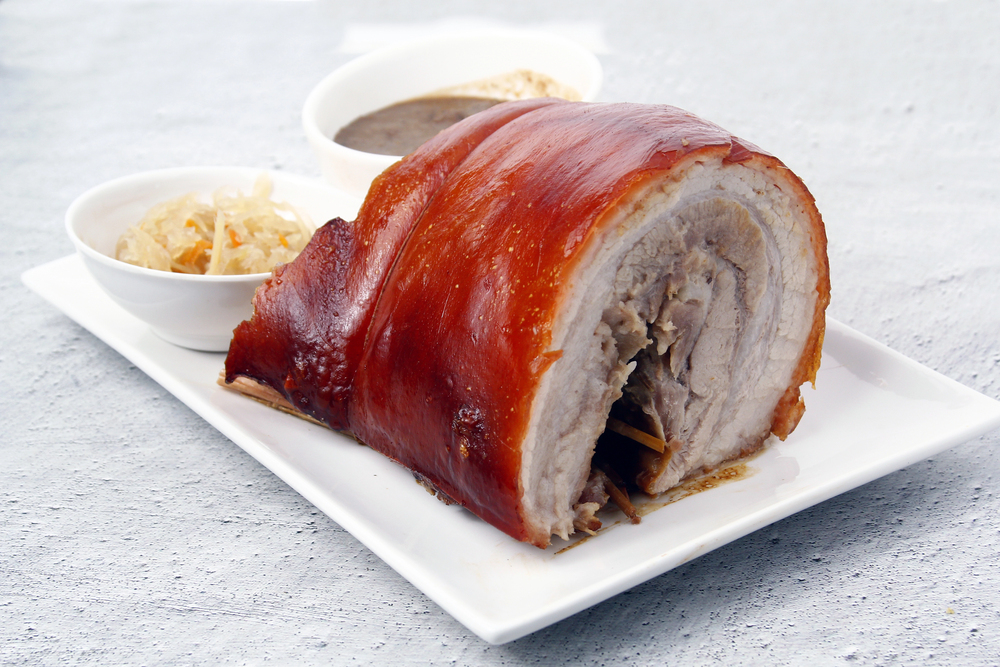
Lechon represents the pinnacle of Filipino celebration food—a whole pig roasted over an open fire until the skin becomes impossibly crispy and the meat stays juicy inside. The preparation takes hours of careful attention, with the pig slowly rotating over glowing coals while basted with a blend of herbs and spices. Cebu-style lechon gets stuffed with lemongrass, garlic, and other aromatics that infuse the meat from the inside out. When Filipinos want to mark a special occasion, lechon takes center stage at the table.
Sinigang
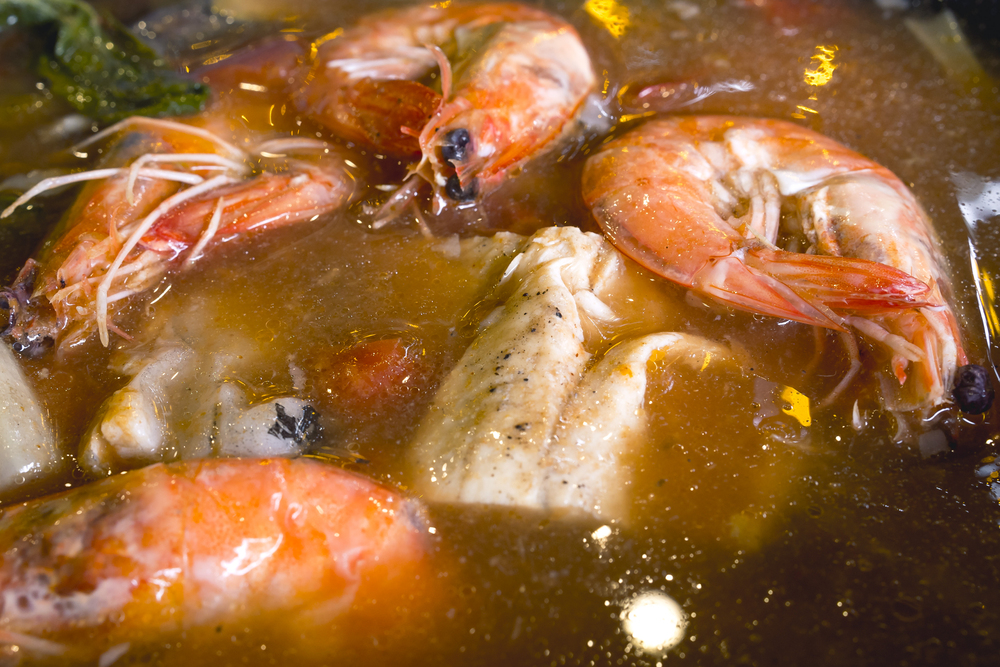
Sinigang delivers comfort in a bowl through its signature sour broth that wakes up every taste bud. Tamarind typically provides the tartness, though green mango, calamansi, or other sour fruits can step in depending on the region and what’s available. The soup usually features pork ribs, shrimp, or fish, along with vegetables like kangkong (water spinach), radish, and eggplant. Each spoonful balances the tangy broth with tender meat and fresh vegetables, creating a harmony that feels like a warm hug from the inside.
Pancit
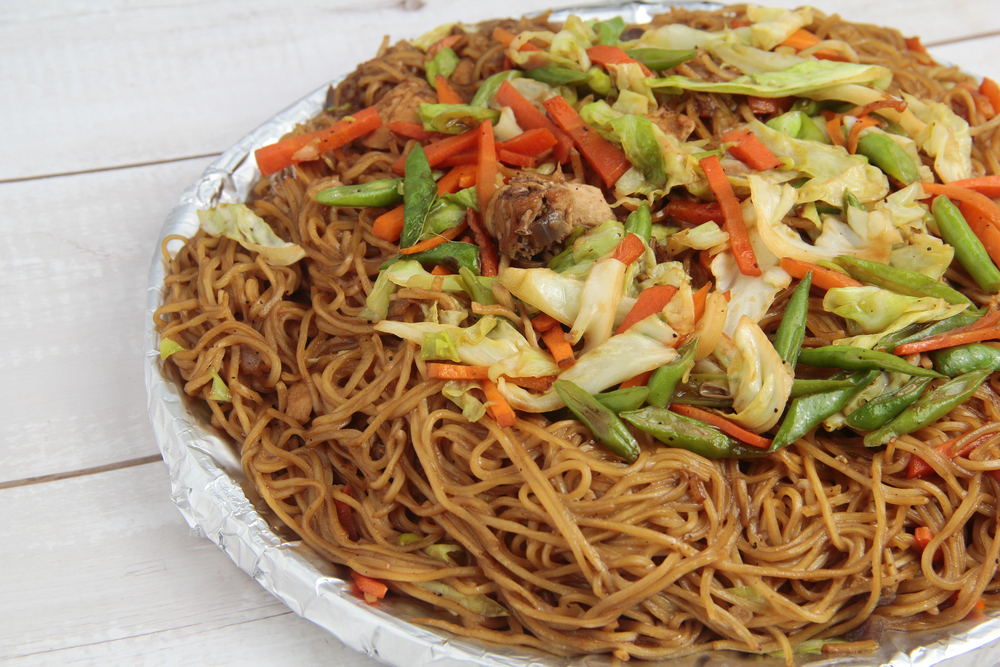
Pancit proves that noodles speak a universal language, even when they get a distinctly Filipino accent. These stir-fried noodles come in countless varieties—from the thin rice noodles of pancit bihon to the thick wheat noodles of pancit canton. Vegetables, meat, and seafood join the party, all tossed together with soy sauce and other seasonings until everything melds into savory perfection. Filipinos traditionally serve pancit at birthday celebrations because the long noodles symbolize long life and good fortune.
Sisig
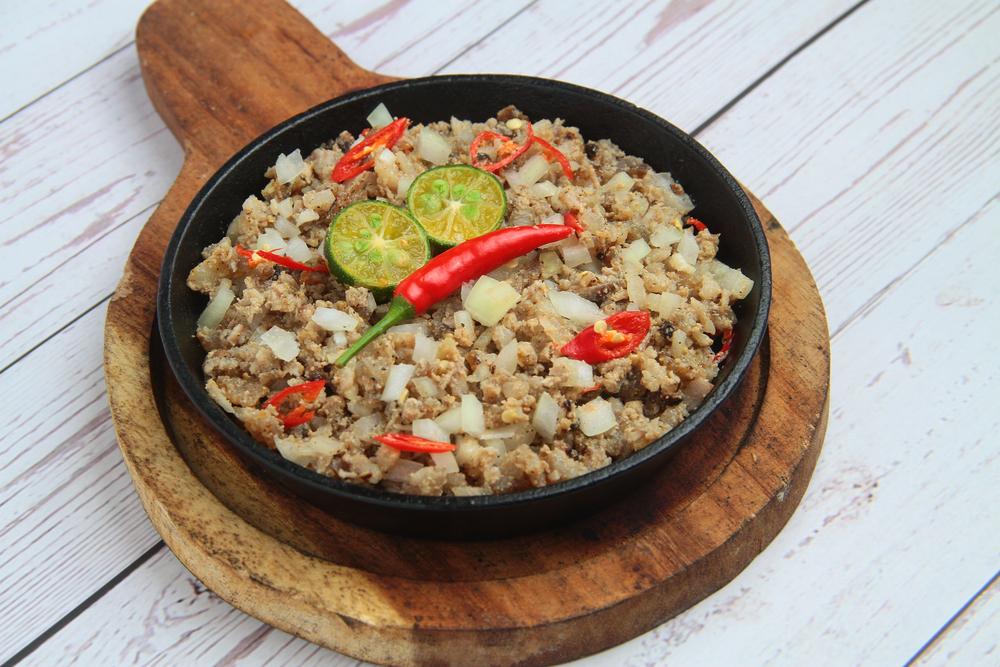
Sisig started as a way to use every part of the pig, but it’s evolved into one of the Philippines’ most beloved bar foods. Chopped pig’s head and liver get grilled, then mixed with onions, chili peppers, and calamansi juice before being served on a sizzling hot plate. The dish arrives at your table still crackling and popping, creating an experience that engages all your senses at once. Modern versions often include a raw egg cracked on top, which cooks from the heat of the plate and adds richness to every bite.
Kare-Kare
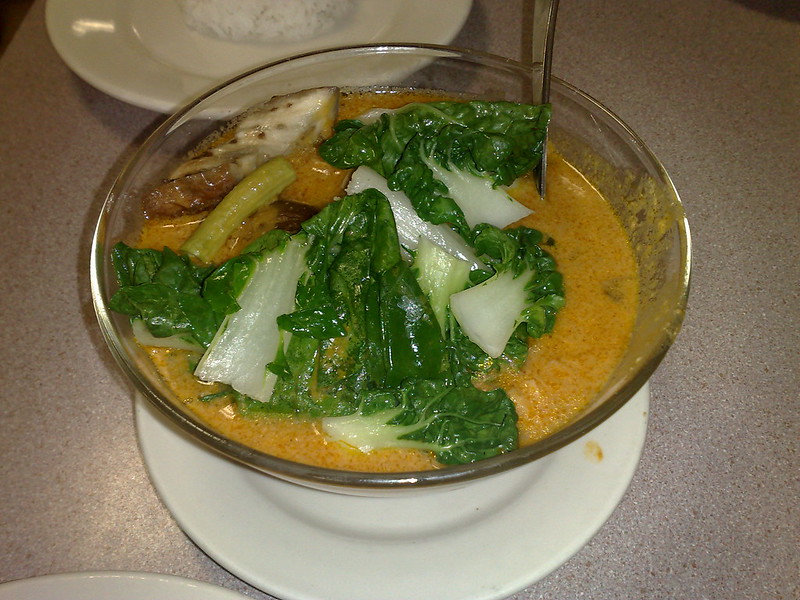
Kare-kare stands out in Filipino cuisine with its rich, nutty sauce that coats tender oxtail and vegetables like a warm, edible blanket. Ground peanuts and rice flour create the thick, golden sauce that defines this dish, while banana blossoms, eggplant, and string beans add color and texture. The stew gets its distinctive flavor from annatto seeds, which give it a beautiful orange hue and a subtle earthy taste. Served alongside bagoong (fermented shrimp paste), kare-kare creates a perfect balance between the mild, creamy stew and the salty, funky condiment.
Halo-Halo
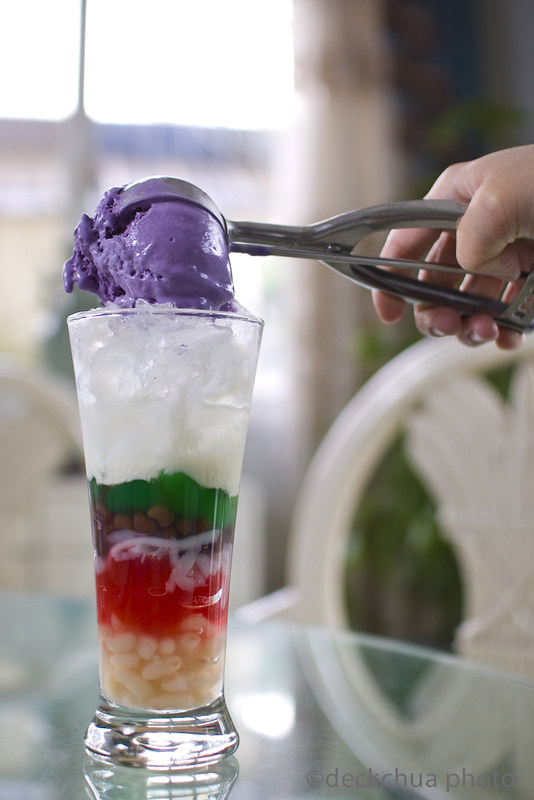
Halo-halo translates to ‘mix-mix,’ which perfectly describes this dessert that looks like a rainbow exploded in a tall glass. Layers of sweetened beans, jellies, fruits, ube (purple yam), leche flan, and ice cream get topped with shaved ice and evaporated milk. The fun comes from mixing everything together with a long spoon, creating new flavor combinations with each bite. This dessert perfectly captures the Filipino approach to food—more is more, and sweet treats should be an adventure for both the eyes and the palate.
Chicken Inasal
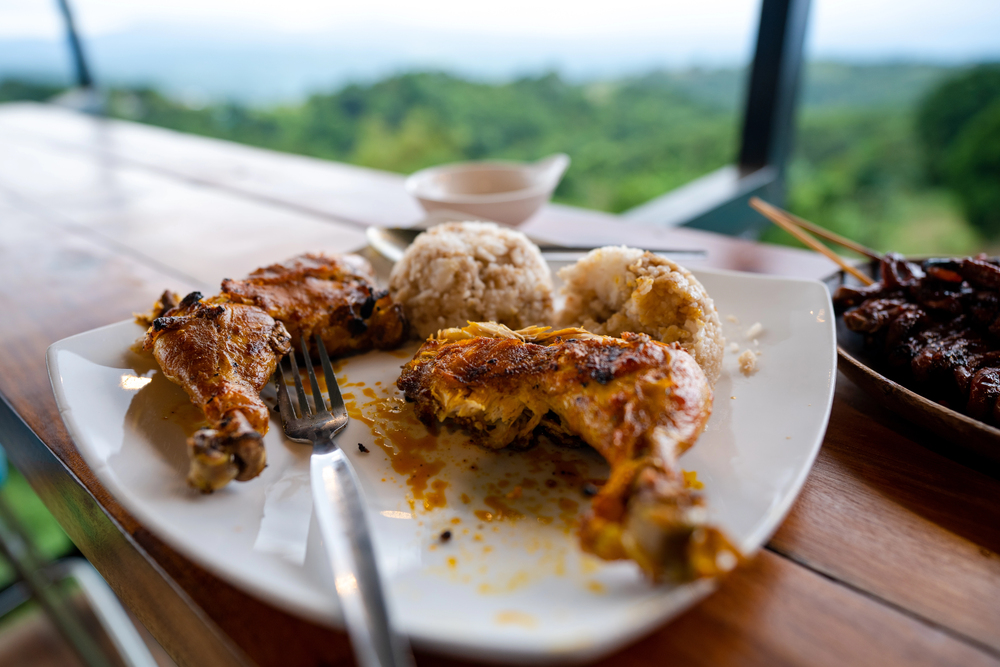
Chicken inasal brings the flavors of Bacolod to grills across the Philippines through its distinctive marinade and cooking technique. The chicken gets marinated in a mixture of calamansi juice, vinegar, garlic, and annatto oil, which gives the meat a beautiful golden color and tangy flavor. Grilled over hot coals and basted repeatedly with the marinade, the chicken develops a slightly charred exterior while staying juicy inside. The dish typically comes with garlic rice and sawsawan (dipping sauce) made from soy sauce, calamansi, and chili peppers.
Taho
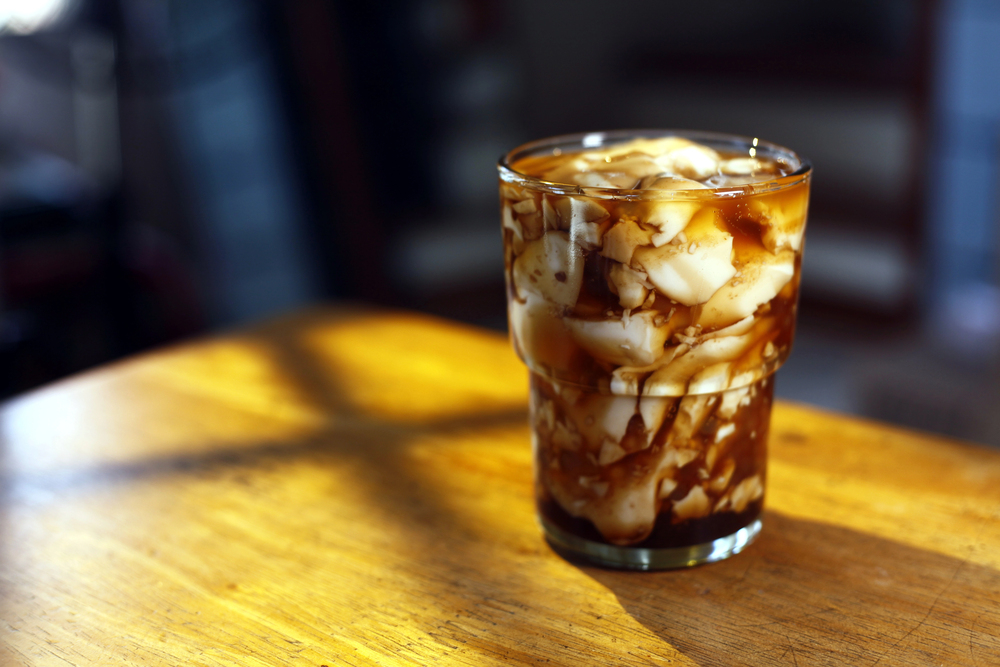
Taho represents one of the Philippines’ most beloved street food experiences, announced by vendors walking through neighborhoods calling ‘Tahoooo!’ in a sing-song voice. This treat layers soft tofu with arnibal (brown sugar syrup) and sago pearls in a plastic cup or glass. The vendor prepares each serving to order, creating layers of different textures and sweetness levels. Eating taho requires a specific technique—you drink it slowly, letting the different components mix in your mouth to create the perfect balance of creamy, sweet, and chewy.
Bicol Express

Bicol Express brings serious heat to the Filipino table through its generous use of chili peppers and rich coconut milk. Pork gets simmered in coconut cream with loads of green chilies, creating a dish that’s both creamy and fiery. The name comes from the train that connected Manila to the Bicol region, known for its spicy cuisine and abundant coconut palms. Despite the intense heat, the coconut milk provides enough richness to balance the fire, making each bite addictive rather than punishing.
Dinuguan
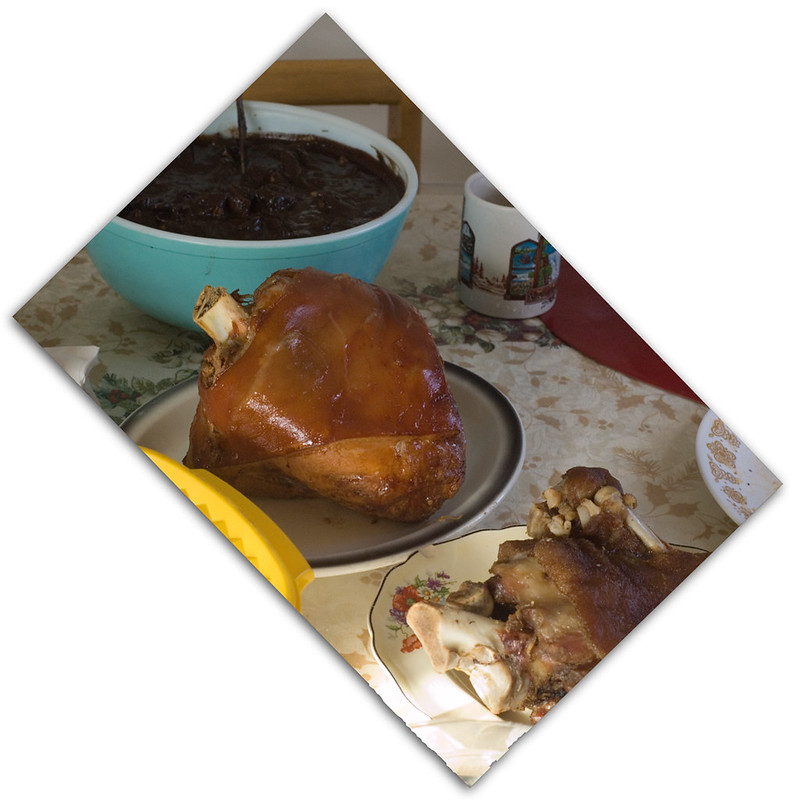
Dinuguan challenges Western palates with its main ingredient—pig’s blood—but rewards brave eaters with incredibly rich, complex flavors. The blood gets cooked with pork meat and organs in a stew seasoned with vinegar, garlic, and chili peppers. The result tastes much milder and more sophisticated than you might expect, with a deep, almost chocolate-like richness. Filipinos often pair dinuguan with puto (steamed rice cakes), creating a combination of savory and slightly sweet that works surprisingly well together.
Bangus

Bangus, or milkfish, holds the title of national fish in the Philippines, and for good reason—it’s incredibly versatile and delicious when prepared properly. The main challenge with bangus lies in its numerous small bones, but Filipino cooks have mastered techniques to minimize this issue. Popular preparations include bangus sisig (deboned and grilled), rellenong bangus (stuffed and fried), and simple grilled bangus served with rice and vegetables. The fish has a mild, slightly sweet flavor that absorbs marinades and seasonings beautifully.
Palabok

Palabok transforms simple rice noodles into a feast for the eyes and palate through its vibrant orange sauce and generous toppings. The sauce gets its color and flavor from annatto seeds, shrimp stock, and ground pork, creating a rich base that coats every strand of noodle. Hard-boiled eggs, chicharron (pork cracklings), green onions, and tinapa (smoked fish) pile on top, adding different textures and flavors to each forkful. This dish proves that Filipino cuisine excels at taking humble ingredients and transforming them into something spectacular.
Balut
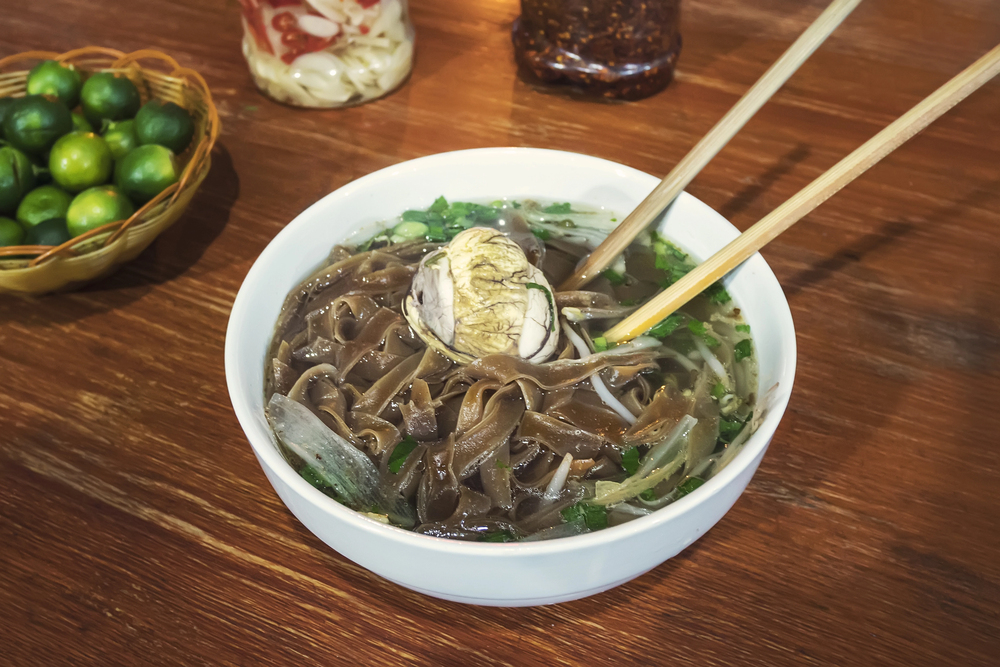
Balut represents the ultimate Filipino street food challenge—a partially developed duck embryo boiled and eaten from the shell. This protein-packed snack gets seasoned with salt, chili, or vinegar, depending on personal preference. The experience involves cracking open the shell, sipping the savory broth inside, then eating the embryo and any remaining egg white. While the concept might seem intimidating to outsiders, balut tastes remarkably mild and provides a texture somewhere between regular hard-boiled egg and tender meat.
Pork Barbecue
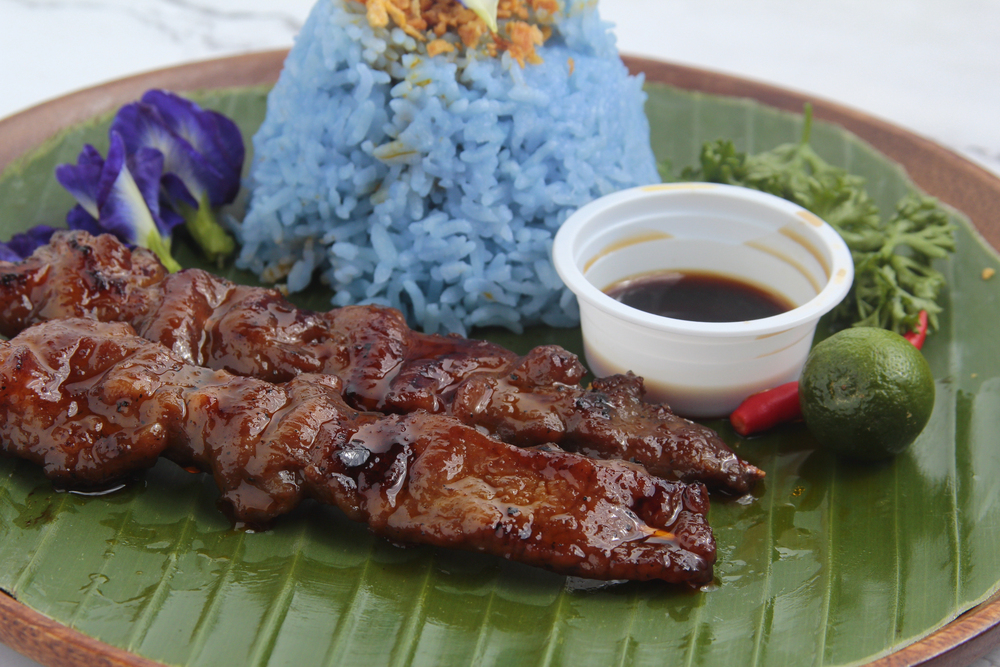
Filipino pork barbecue takes the American concept and gives it a distinctly Southeast Asian twist through its sweet marinade and preparation style. Pork gets cut into small cubes, marinated in a mixture of soy sauce, banana ketchup, brown sugar, and spices, then skewered and grilled over charcoal. The result is meat that’s slightly charred on the outside but stays tender and flavorful inside. Street vendors across the Philippines serve these skewers fresh off the grill, often accompanied by rice and a simple salad of tomatoes and onions.
Lumpiang Shanghai

Lumpiang Shanghai takes the lumpia concept and shrinks it down to bite-sized perfection, making it ideal for parties and gatherings. These mini spring rolls get filled with seasoned ground pork and vegetables, wrapped tightly in thin pastry, then deep-fried until golden and crispy. The small size means you get a higher ratio of crispy wrapper to filling, creating an incredibly satisfying crunch with each bite. Sweet and sour sauce or banana ketchup provides the perfect dipping complement to these addictive little parcels.
Leche Flan
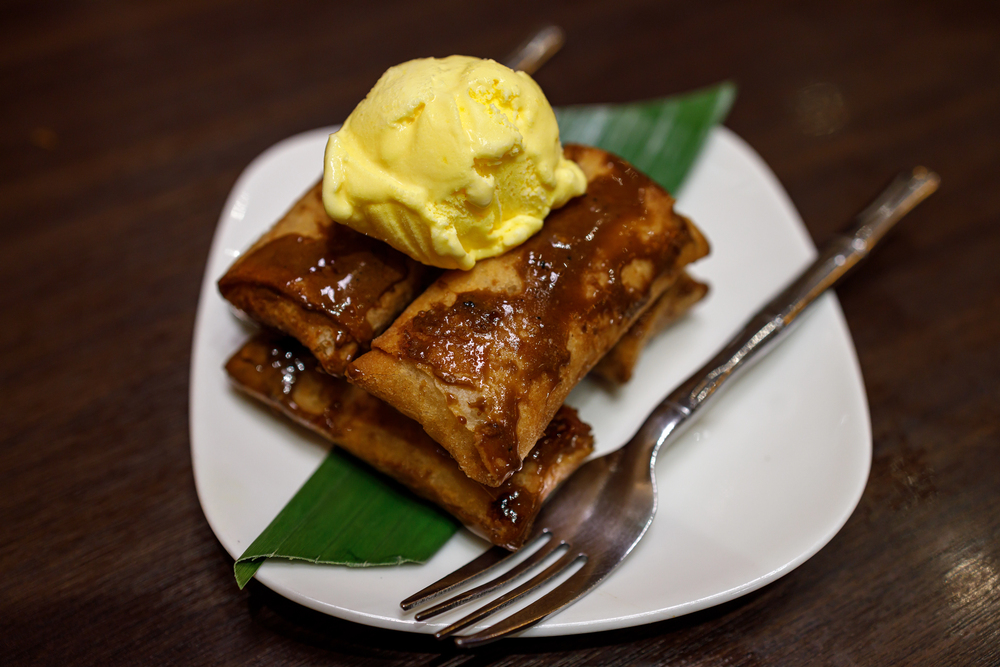
Leche flan serves as the Philippines’ answer to crème caramel, but with a richness and sweetness that puts most other versions to shame. Made with egg yolks, condensed milk, and evaporated milk, this dessert achieves an incredibly smooth, dense texture that melts on your tongue. The caramel sauce gets cooked until it reaches a deep amber color, providing a slightly bitter contrast to the sweet custard. Traditionally steamed in llanera (flan molds), leche flan appears at virtually every Filipino celebration and special occasion.
From Islands to Plates
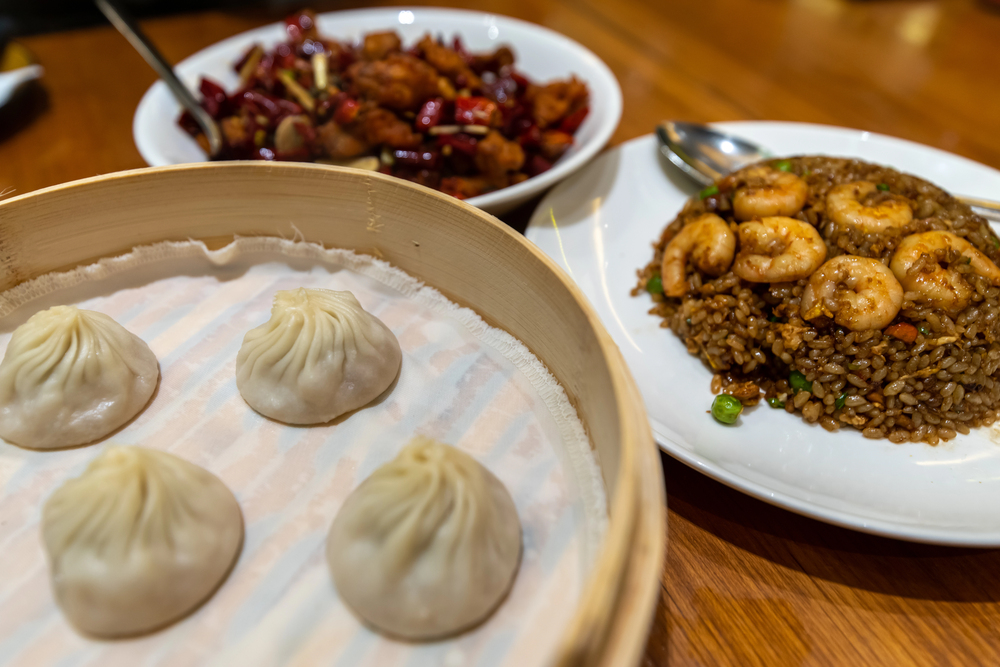
Filipino cuisine tells the story of a nation shaped by geography, history, and the creativity of its people. These 18 dishes represent just a fraction of the incredible food diversity found across the Philippines’ thousands of islands, each one reflecting local ingredients, cultural influences, and family traditions passed down through generations. The Spanish introduced techniques that became adobo, Chinese traders brought noodles that evolved into pancit, and indigenous ingredients like coconut and tropical fruits provided the foundation for everything else.
Today, Filipino restaurants around the world are introducing new audiences to these bold, complex flavors that balance sweet, sour, salty, and umami in ways that seem almost magical. The next time you encounter Filipino food, remember that each dish carries centuries of history and represents the incredible ingenuity of cooks who transformed whatever ingredients they had into something absolutely delicious.
More from Travel Pug

- 20 Best Beach Towns in the Carolinas
- 13 Destinations Where Tourists Regularly Regret Their Trip
- 20 Things You Actually Get in First Class
- 20 Small Airports With Aviation Museums
- 20 Places in the U.S. That Are Perfect for a Reset Trip
Like Travel Pug’s content? Follow us on MSN.
